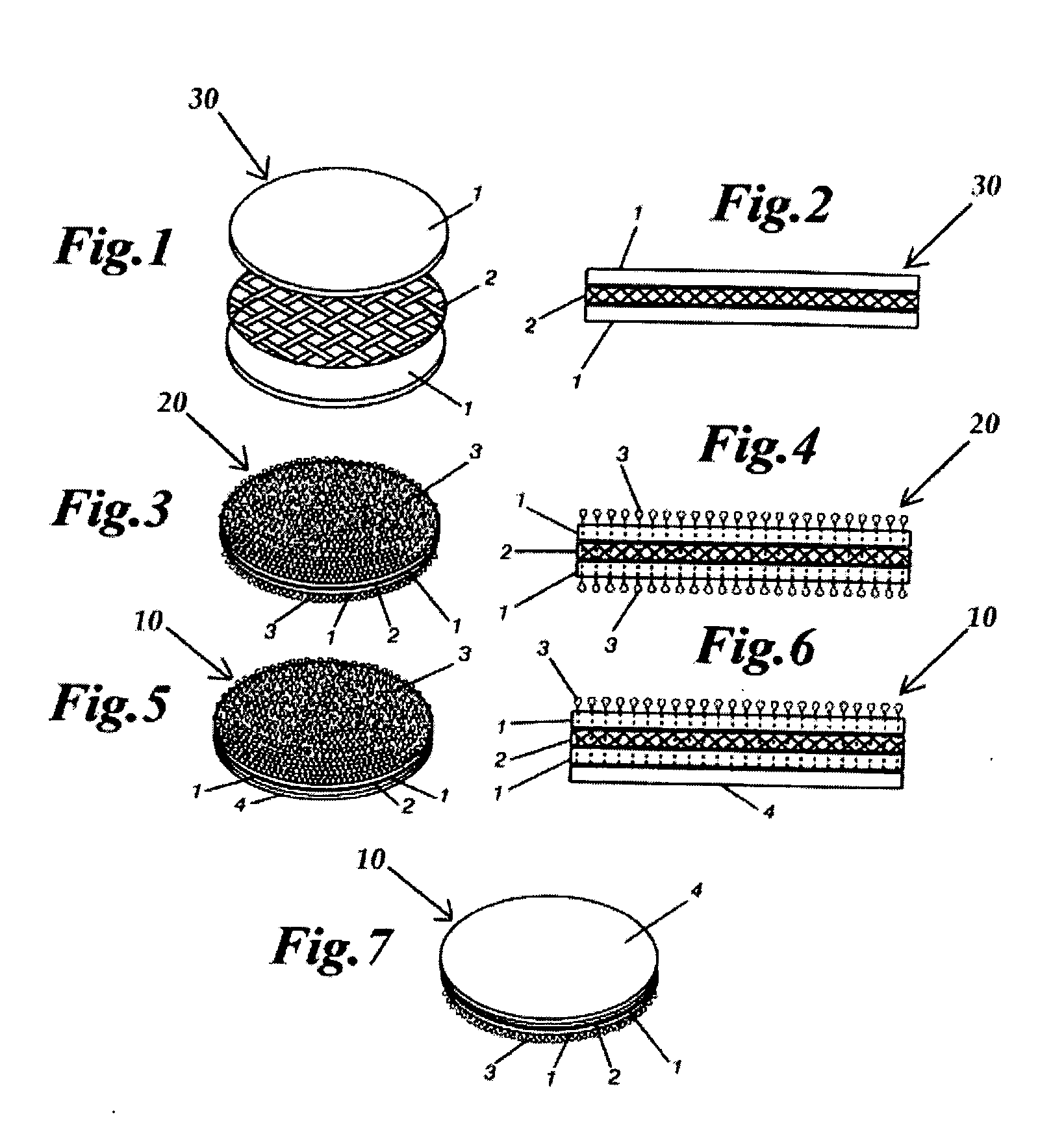Universal fleecebacked roofing membrane
a technology of roofing membrane and fleece backing, which is applied in the field of roofing membranes, can solve the problems of no longer widely used roofing formulations, less resistance to cracking, and increased resistance to cracking, and achieves excellent weather resistance, good weather resistance, and non-flammability.
- Summary
- Abstract
- Description
- Claims
- Application Information
AI Technical Summary
Benefits of technology
Problems solved by technology
Method used
Image
Examples
Embodiment Construction
[0034] The invented product is a fleecebacked laminate that is suitable as a fleecebacked roofing membrane. The laminate is comprised of the following: 1) a thermoplastic reinforced planar sheet, 2) a needle punched fleece formed on both sides of the thermoplastic reinforced planar sheet, and 3) a thermoplastic polymeric layer extruded onto one side of the fleece. The fleece is formed by needle punching fibers through the reinforced planar sheet. The reinforced planar sheet serves as a common supporting base for the resulting two-side fleece. The thermoplastic polymeric layer is embedded with one side of the fleece fibers. The thermoplastic polymeric layer serves as the top layer of the roofing membrane, and the second side of fleece fibers serves as a felt. The thermoplastic polymeric layer is preferably composed of an extruded PVC substrate, compounded to have excellent weather resistance, printability, and to be nonflammable. The fleece fibers are preferably composed of polyester...
PUM
| Property | Measurement | Unit |
|---|---|---|
| thicknesses | aaaaa | aaaaa |
| height | aaaaa | aaaaa |
| temperature performance | aaaaa | aaaaa |
Abstract
Description
Claims
Application Information
 Login to View More
Login to View More - R&D
- Intellectual Property
- Life Sciences
- Materials
- Tech Scout
- Unparalleled Data Quality
- Higher Quality Content
- 60% Fewer Hallucinations
Browse by: Latest US Patents, China's latest patents, Technical Efficacy Thesaurus, Application Domain, Technology Topic, Popular Technical Reports.
© 2025 PatSnap. All rights reserved.Legal|Privacy policy|Modern Slavery Act Transparency Statement|Sitemap|About US| Contact US: help@patsnap.com

